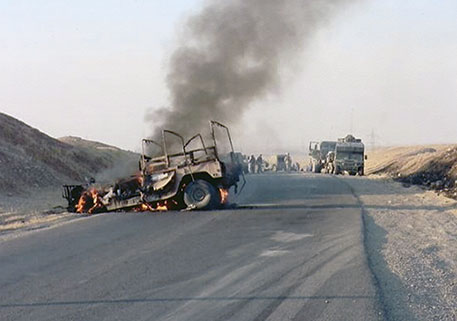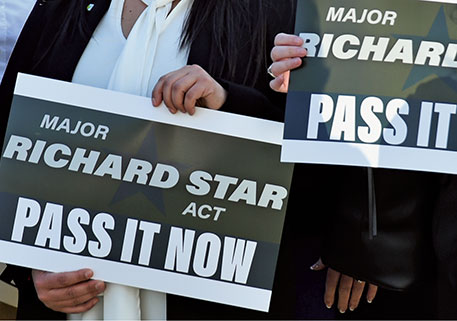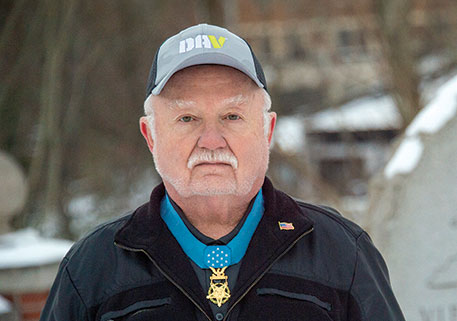 Grant writers are under a lot of pressure. The work they do when completing applications on behalf of their organizations can make the difference between being awarded or denied critical funds.
Grant writers are under a lot of pressure. The work they do when completing applications on behalf of their organizations can make the difference between being awarded or denied critical funds.
With the DAV (Disabled American Veterans) Charitable Service Trust recently accepting applications for its first open cycle of 2023, here are some of the most common mistakes, errors and misconceptions grant reviewers see that can cause an application to be rejected.
Grant writers applying to the Trust have a better chance of having their applications approved by avoiding these four pitfalls:
#1 – Outdated documents
Submitting outdated financial audits or IRS Form 990s is one of the most common errors.
For example, for this current open cycle, which runs until Jan. 31, these documents are required to be dated between Dec. 31, 2021, and now. It’s likely though that the Trust will receive documents this particular cycle dated either June or September 2021, which are common months for audits to come out.
All this means is that these organizations are submitting too early in the year. Since organizations are only allowed to submit one application per year, this can sting.
But there’s hope.
Four open cycles run per year. Organizations waiting on updated documents just need to wait a few months before applying so their documents are current for the cycle they’re applying for. Information about those dates can be found here.
#2 – Missing details
It’s no surprise that a lot goes into a grant application. It can be a time-consuming process to research the requirements, gather documents and write the proposal. So that all that effort isn’t wasted, it’s recommended to double- and triple-check every detail.
Every form should be completely filled out. Check those IRS Form W-9s and 990s. It’s not unusual for submitted forms to be missing dates and signatures. And some 990s haven’t been filed with the IRS.
Every scanned document should be checked to ensure no upload errors were made—each page was scanned and legible.
Don’t procrastinate. Most applications are received in the last couple of days of an open cycle, and those submissions typically have the most errors. Applicants should start the application process as soon as possible to reduce the risk of missing details by rushing to meet a deadline. And speaking of deadlines, the Trust portal closes at 4:30 p.m. Eastern time on the last day of the cycle.
#3 – No ‘how’
This topic dovetails into paying attention to detail. Learning about and awarding grants to organizations that meet disabled veterans’ needs is inspiring. But a thorough understanding of how funds will be used is critical.
Some applications tend to emphasize the “why” behind their organization’s mission, but the “how” that accompanies a request is key to achieving funding.
How do veterans get into the program? How would the money be used? How is the program conducted?
One area of the application to pay particular attention to is the program budget table. Applicants need to break down specifically how funds would be used. For example, is the money going toward program funds, personnel or materials? Show and explain each budget item.
Other details about a program or organization are important. But successful applicants typically use those details to support the “how.” Applications should be detailed and as clear as possible.
#4 – Ineligible purposes
Funds granted by the Trust can be used for many purposes that align with DAV’s mission to empower veterans to lead high-quality lives with respect and dignity. But a few things aren’t typically allowed.
First, the Trust doesn’t usually fund indirect requests. There’s been an uptick in these requests recently. Examples of indirect funds include marketing, fundraising and outreach efforts; major equipment or infrastructure purchases; non-program-related salaries and benefits; endowments; capital campaigns; and pilot or newly established projects.
Second, the Trust doesn’t grant regranting requests. This means funds aren’t awarded to be used by one entity to fund another. The organization requesting the Trust’s money should be the one to use it.
Finally, the Trust doesn’t grant money to cover an entire program. Other funding sources or an organization’s own assets need to be a part of the applicant’s financial plan. This indication of financial stability means that a program should be able to function in some capacity without the support of the Trust.
Hopefully, by avoiding these common mistakes, grant writers and organizations can put their best application forward to the Trust. For questions or assistance with accessing the system, contact the Trust’s team at [email protected]. More information and the application portal can be found at CharitableServiceTrust.org.





